Kaapstad
Over the last 400 years its been called a few different names such as Mother City for its foundation role in the country and the Tavern of the Seas for its role as a shipping and sailing stopover. But the original Dutch settlers called it Kaapstad and it has retained that name for the majority of its current Afrikaner inhabitants. We know it as Cape Town, one of the true jewels of the world for large cities, pitched around a dramatic mountain called Table Mountain on a southern peninsula dividing two oceans. We’ve driven down from Namibia, seen some great stuff on the way, and were keen to explore Cape Town and its environs.
Cape Town is more than just a large city, it has a number of unique geographical, viticultural and historical features which need exploration. And we also were planning to meet up with some Australian friends who were holidaying in the area – something we rarely get to do in our travels. So where to start?
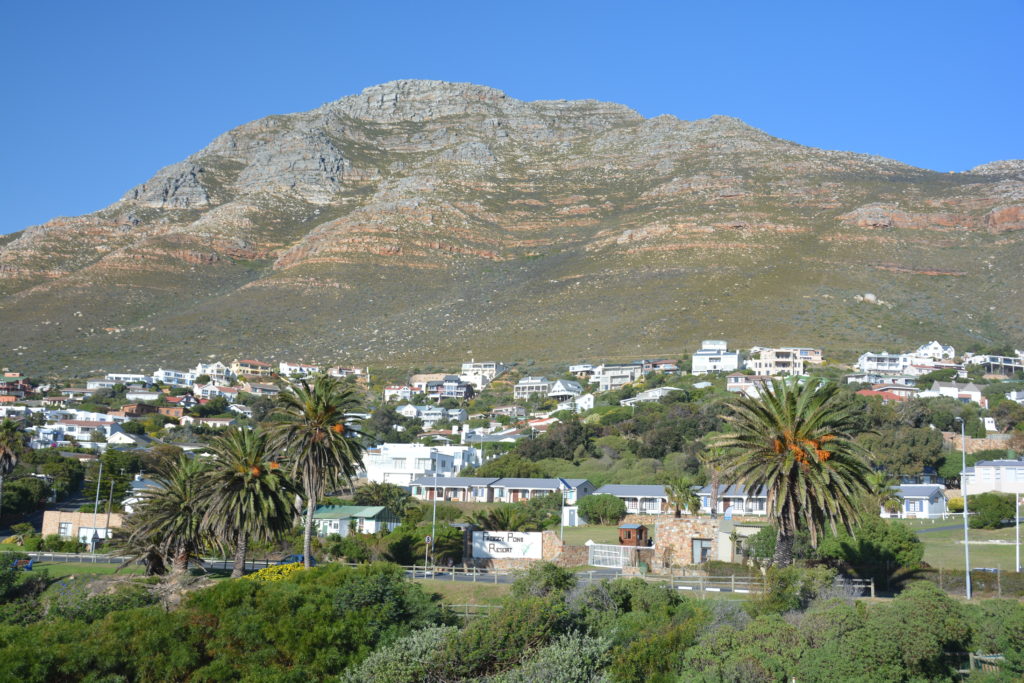
Cape Town and its sprawling suburbs are perched around and on the slopes of dramatic rocky mountains which form the peninsula leading to the Cape of Good Hope
We figured it had to be the penguins. As it happens, Africa’s only penguins have a permanent colony on the Cape Peninsula and we camped so close that the next morning we just walked down to their nesting area along the large boulders and beaches that make up this part of the coastline in False Bay. They were delightful little creatures, distinctive in colour and in their noise which sounds so incongruously like a donkey they are often called Jackass Penguins.
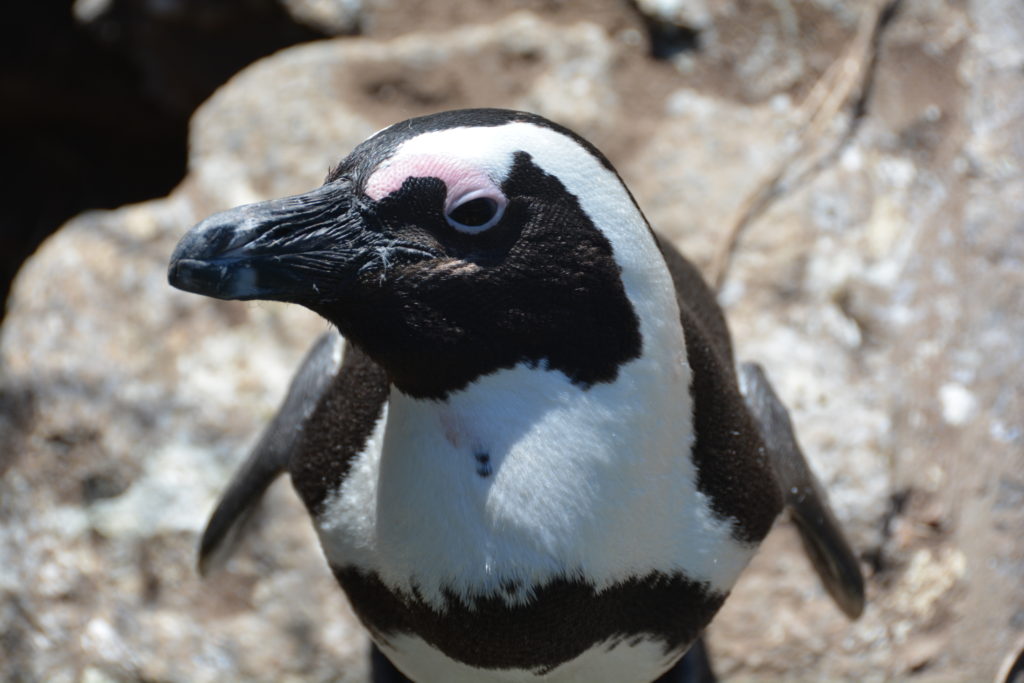
These little fellows don’t seem to mind a little attention although there is usually a fence between us
Some penguins were still sitting on eggs, others were nursing small chicks while other chicks were much bigger and starting to lose their baby fur. Whatever the case, and in their hundreds on the beach, they were super cute and a great way to start the day.
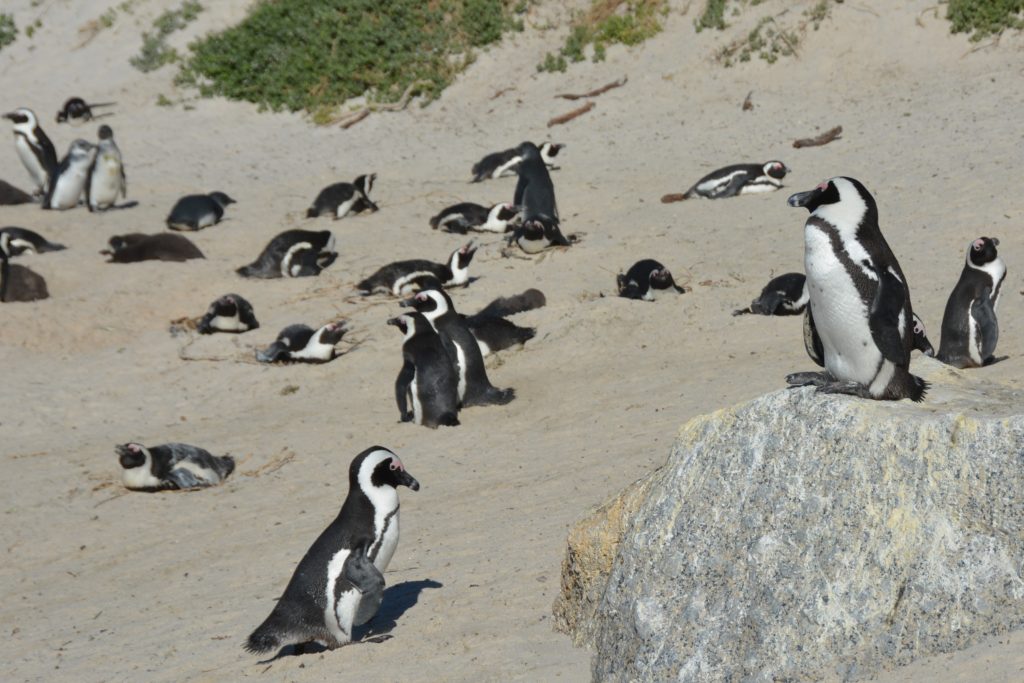
We probably saw a couple hundred penguins, most just nesting on the beach with their eggs or little chicks
We then drove down to Cape Point and its more famous sister point, Cape of Good Hope, the southern most point of southwestern Africa (technically there is another point further east that is more south than Cape of Good Hope but our grade school geography teacher was never wrong). We’re into superlatives like the highest, largest, widest, southern-most or whatever so standing at the Cape of Good Hope was great fun. And climbing the steps up to the lighthouse at Cape Point for fabulous views of the coastline in all directions was a real highlight.
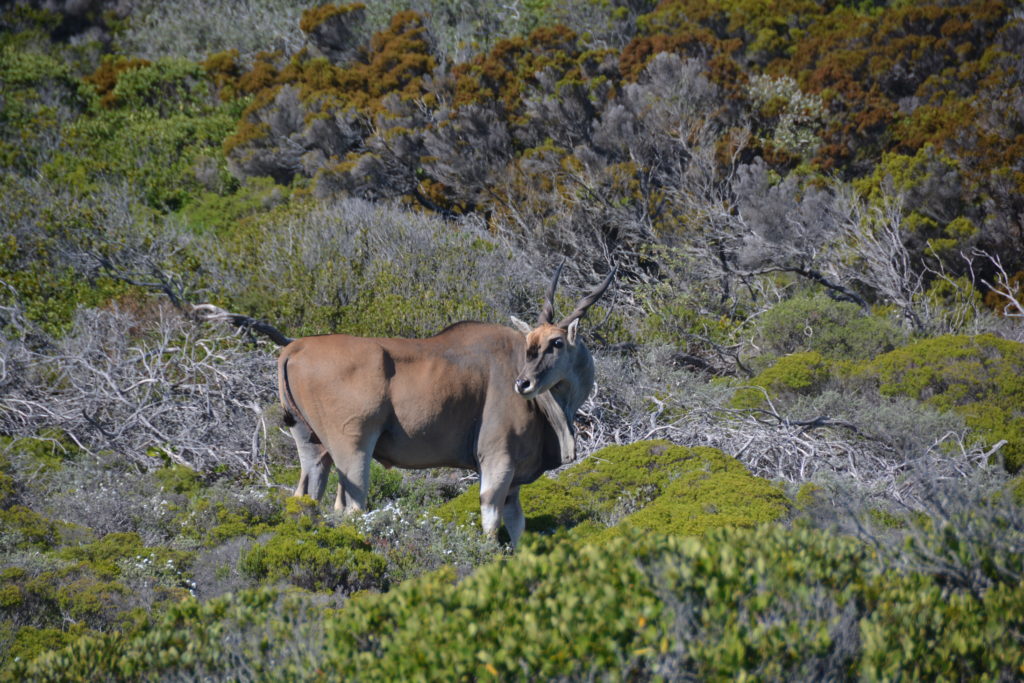
The Cape National Park featured a number of wild animals including one of our favourites – the eland
With the sun sparkling and the wind down to a cooling breeze we headed along the west coast of the peninsula and drove the toll road called Chapman’s Peak Drive, said to be one of the most spectacular drives in the world. High praise indeed and we’ve seen a few spectacular drives so we were keen to check this one out. And we weren’t disappointed. With a mix of California’s Big Sur, a bit of a Norwegian Fjord and some of Australia’s Great Ocean Road the Chapman’s Peak Drive had all the goodies, even if the drop-dead cliff-hugging crashing surf section was only about five kilometres long. Great fun.
We camped that night in an obscure and scruffy place outside of town, llamas and pigs rather oddly at our back door, and the next morning headed back into town for literally the centrepiece of Cape Town. Table Mountain not just dominates the city, it defines it. Cape Town is a city of almost five million people, about the same size as Sydney, and it is wrapped around Table Mountain much like Sydney is wrapped around its harbour. But Table Mountain climbs over 1,000 metres (3,300 feet), such a dominating force that it is visible from almost every point. It is spectacular.
With blue sunny skies, only a hint of cloud sitting on the mountain’s top, which the locals call a table cloth when it gets thick, we rode the revolving cable car to the top of the table, stunning views all around. From there we took in all the vantage points, watched the clouds swirl around us and enjoyed the different views as we circumnavigated the table summit. We particularly liked how the views changed with the changing clouds, feeling like we were birds flying above the clouds. Cape Town, its port, its beaches, its downtown, everything was in full view to us and it all looked fabulous.
Eventually we took the cable car back down and drove to the top of the much lower but more historically significant Signal Hill which sits out above the port area and was used to spot ships and then fly flags to tell the citizenry that visitors were coming. The closer views of the harbour, the port and the new shopping complexes near the water were all equally impressive. Cape Town was shining big time.
We then went down to the waterfront and explored the Victoria and Albert Wharfs, now super-developed as big vibrant shopping, restaurant and entertainment centres. Live music around every corner, beautiful ships in the water, deck-side restaurants serving beautiful seafood, shopping malls with all the local and international brands, absolutely everything any beautiful modern city wants and needs. Even though these settings weren’t exactly our scene we were quick to recognise what a gem of a waterfront complex this was, unquestionably world class.
We drove out to the famous vineyard area of Stellenbosch and camped in the middle of a large grove of tall pine trees. That night we caught up with our great friends Dave and Kerry from Sydney who were holidaying in South Africa. We enjoyed a fun night catching up with them and others they were travelling with. It’s a small world!
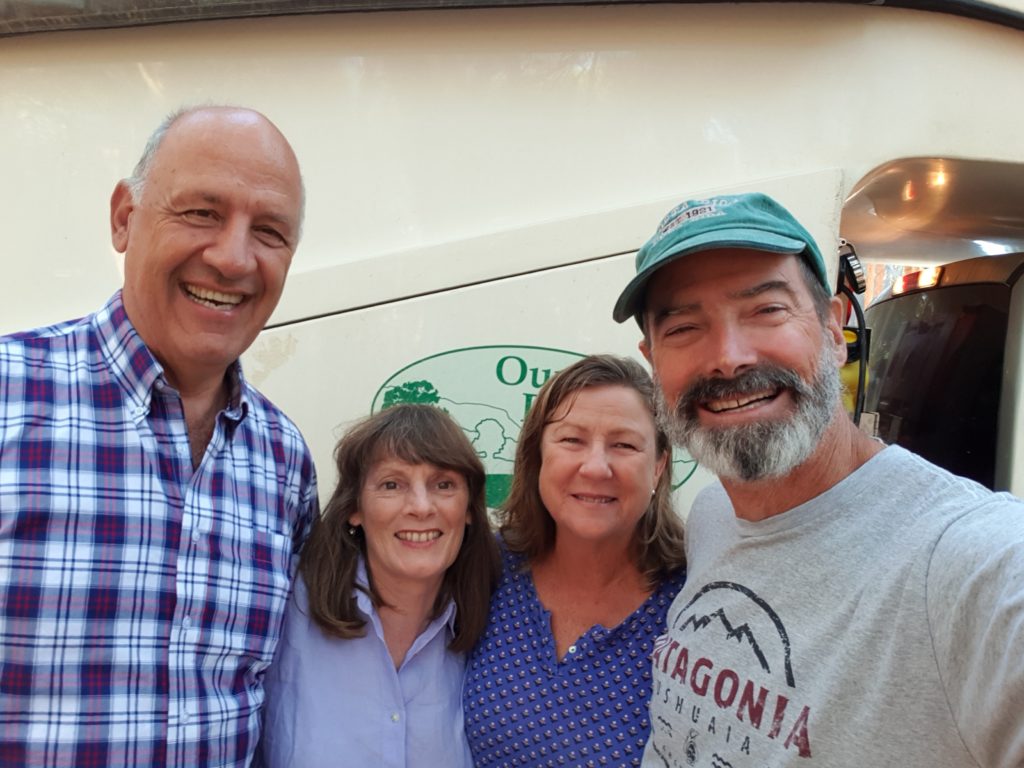
Our good friends from Sydney, Dave and Kerry were our guides for a couple of days around the vineyards and wineries of Stellenbosch
Dave is originally from South Africa and he and Kerry are regular visitors to his homeland so we gave Tramp the day off and jumped in with them for a full day tour of the vineyards, wineries and the lovely little towns that make up this famous area.
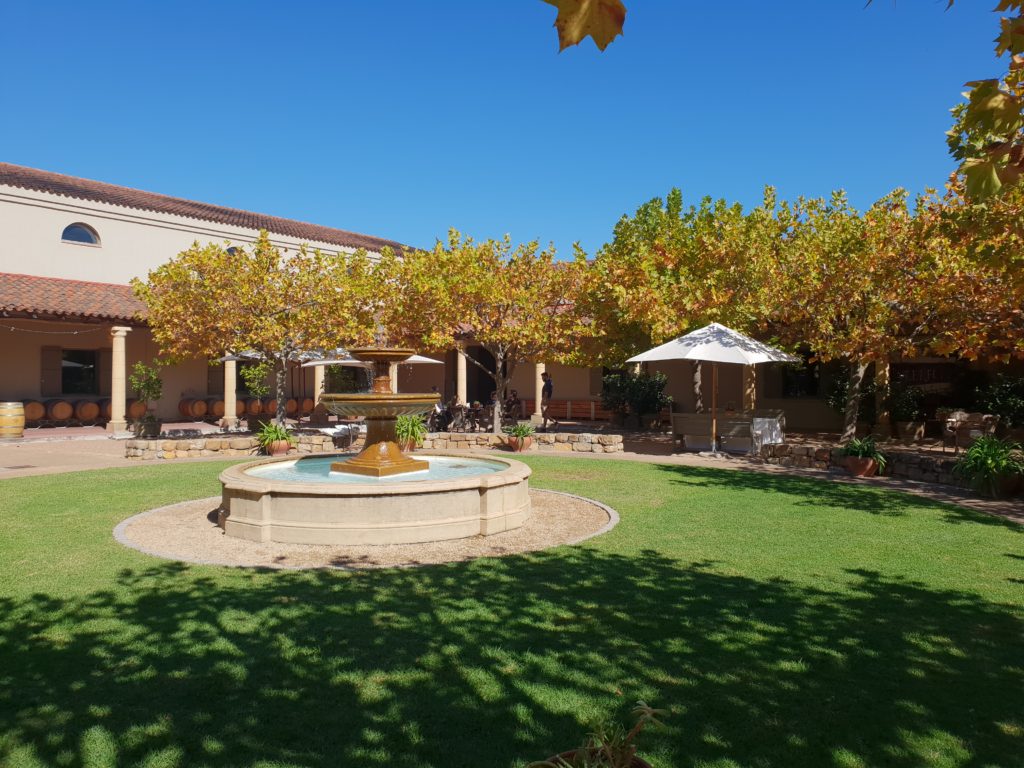
The wineries of Stellenbosch were much more than just wine – they featured beautiful gardens, great restaurants, markets, shops, all sorts of ways to entertain yourself
Stellenbosch was a university town before it gained worldwide fame for its wines and still sports a handsome collection of old buildings and quaint streets that reflect its wealth and influence in building South Africa. But the main drawcard these days are the wineries, no longer just a place to sip wines and buy a bottle or two, these huge estates are each a full day of activities and entertainment in themselves.
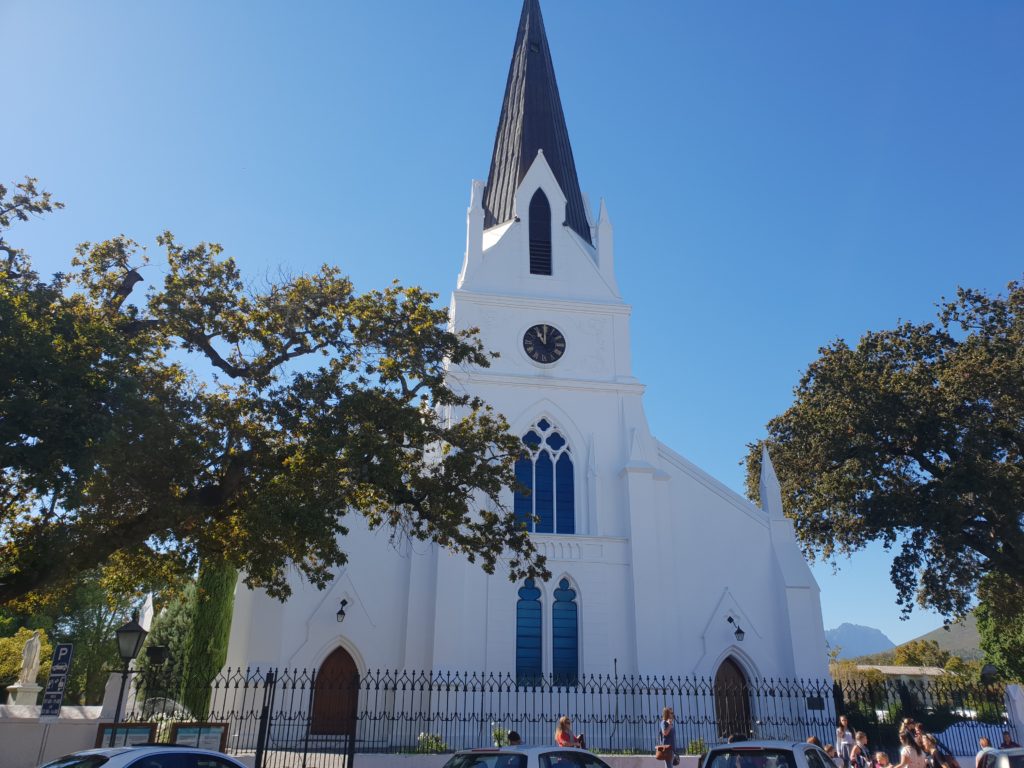
Wandering around Stellenbosch you get a sense of good solid ever-lasting Dutch design and architecture
Some wineries boast of their origins stretching back to the 17th century but many of them also feature huge gardens, restaurants, spas, gift stores, animal farms, arts and crafts markets, tours of the grounds in open-air game safari vehicles, live music and most importantly – wine tasting. All of them were immaculately presented in beautiful settings with the majestic mountains of the area all around them.
On Dave’s supremo winery tour we visited no less than eight wineries, all of them different and all of them spectacular, but only sat down to taste the local product at the last one as the sun was setting. We loved exploring the gardens and grounds of these huge estates and marvelled at the money that was flowing into and out of this rich wine growing area. The whole day was another worldly experience but it certainly didn’t feel like we were in Africa.
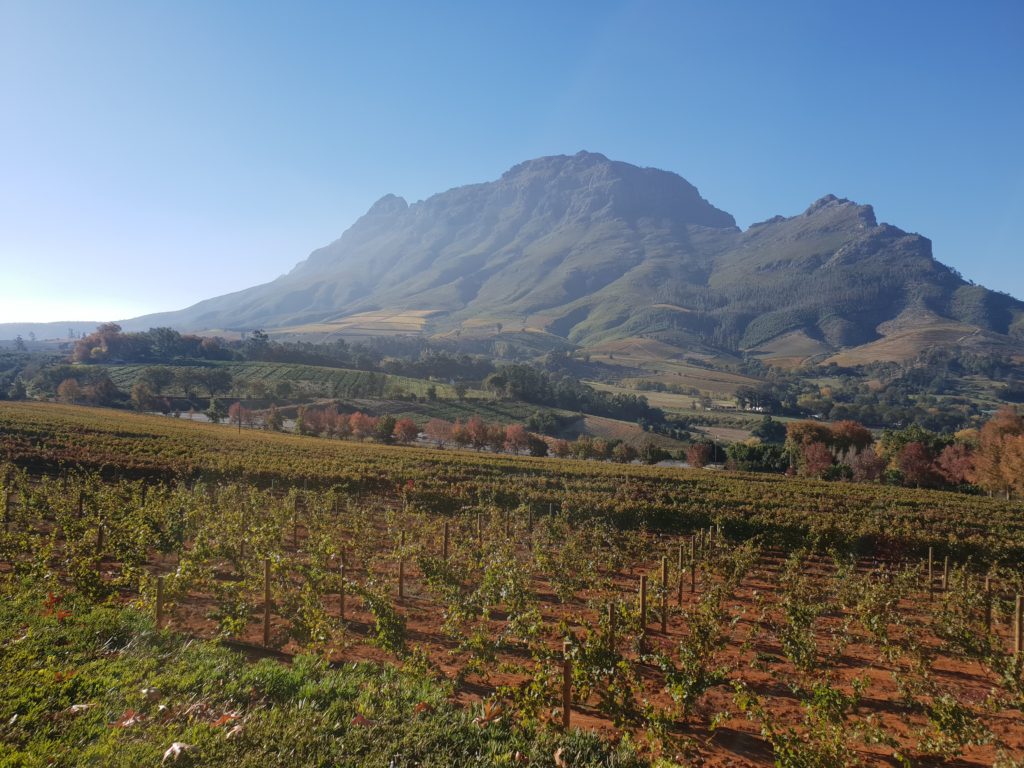
We were amazed at the wealth that was on display in the Stellenbosch region – it certainly didn’t feel like Africa
But Kapstaad had one more gem to offer us before we moved on. South Africa’s most famous citizen, and the inspirational leader of modern South Africa, was the late Nelson Mandela who spent 27 years of his life in prison for standing up for his beliefs about a free and equal country. Mandela and many other political prisoners were incarcerated in the infamous Robben Island prison just off the coast from Cape Town. This site, now a UNESCO World Heritage location, is the symbolic heart of South Africa’s struggle for equality and freedom.
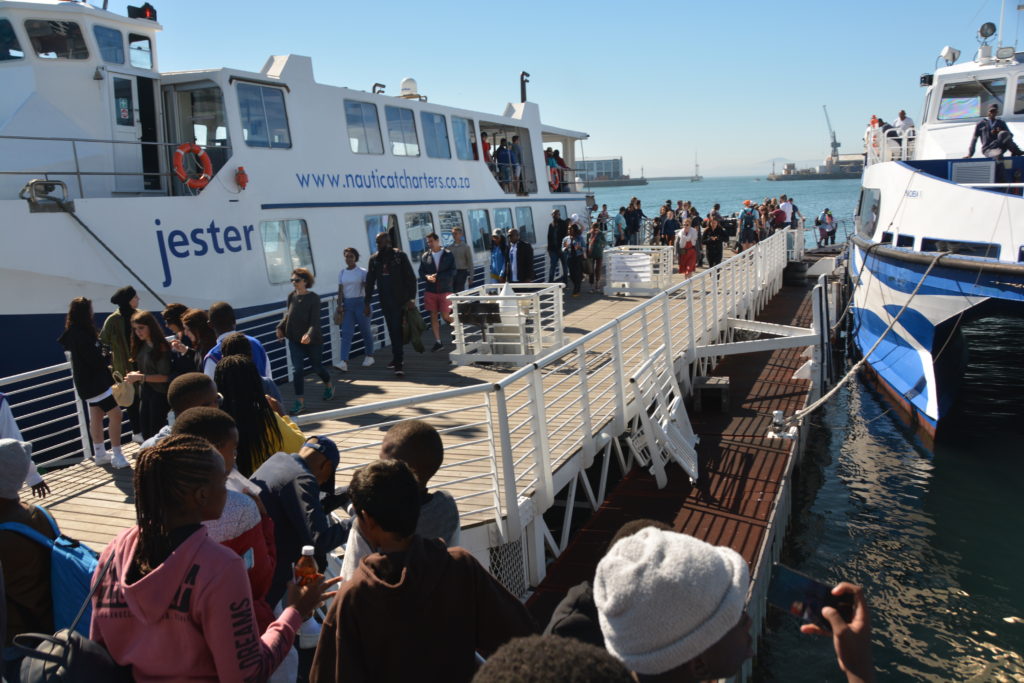
Catching the ferry out to Robben Island was a hectic and crowded affair – all part of the experience
We caught the ferry out to Robben Island and clambered onto one of many buses which start the tour of the facilities. But this tour didn’t work – sure we saw a few of the main sites, including two churches, some prison buildings and visitor accommodations but it was rushed and our tour guide was all bark and sharp edges.
Then we stopped at the maximum-security complex and our new guide was a quietly spoken spritely-built man in his 60’s who was a prisoner at Robben Island from 1977 to 1982. He led us through the different sections of this most notorious part of the prison, explaining along the way how he was in high school during the Soweto riots in 1976 and organised student protests at his high school in Port Elizabeth. For this crime he was arrested, convicted and sentenced to five years at Robben Island.
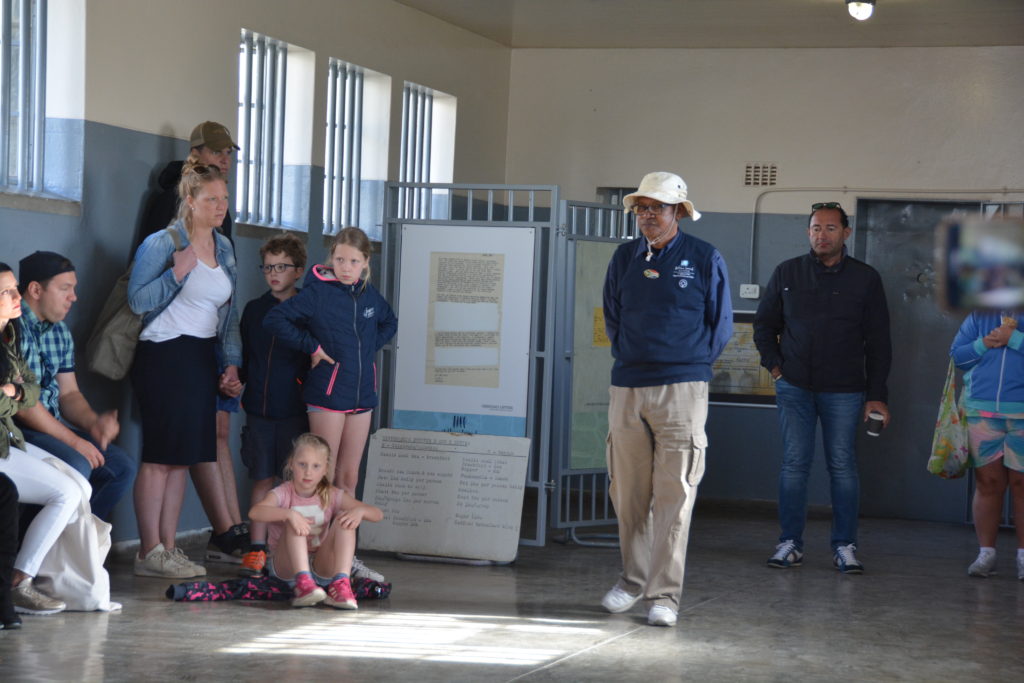
Our softly spoken and very mellow tour guide of the maximum security section of the prison was a political prisoner himself for five years – it brought a lump to our throats
Eventually we came to the building with single cells for those political prisoners who were regarded as the most dangerous and had almost no privileges. Despite the crowds we were able to pause briefly and look into Mandela’s small prison cell where he lived for 18 out of his 27 years in prison.
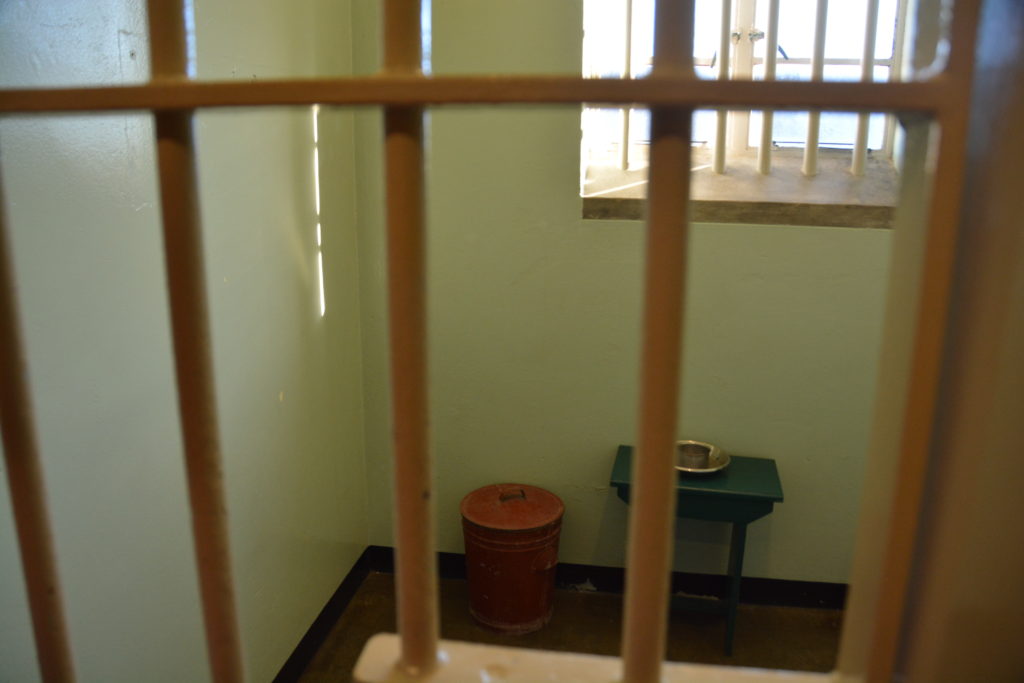
Not easy to photograph with the crowds but here’s a glimpse of Nelson Mandela’s small cell where he lived for an astounding 18 years
How he and others like him kept healthy, sane and balanced under such trying conditions is a tribute to all of them. Of course history tells us that Mandela emerged from prison to become the first President of the new South Africa and lead his country through a very difficult and traumatic period. He was a man for the ages.
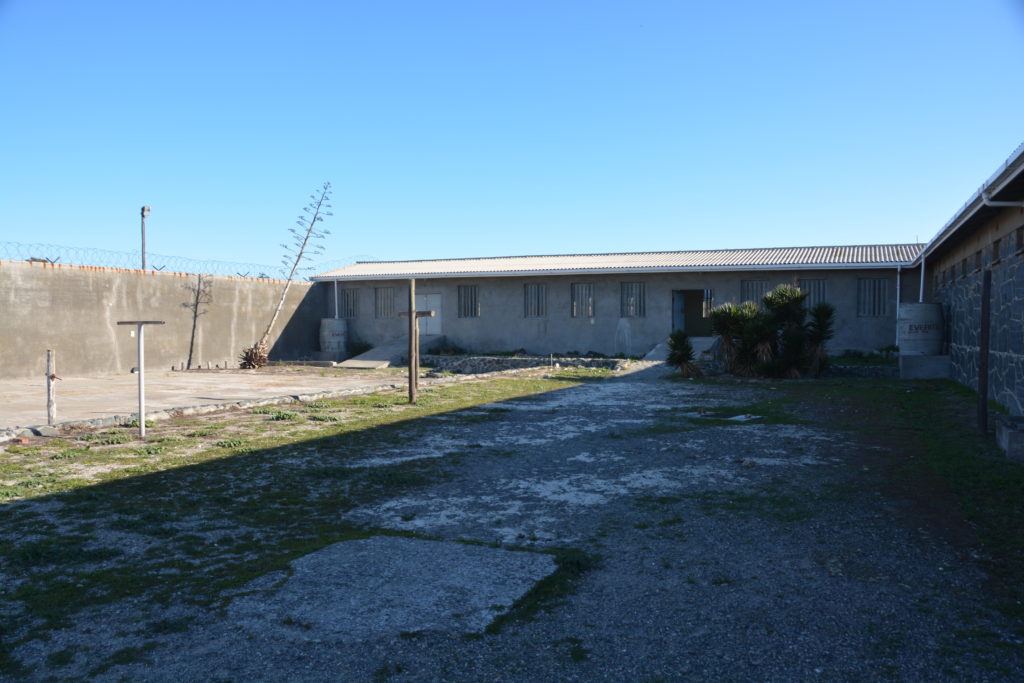
One of the exercise yards where maximum security prisoners were allowed to exercise for as little as one hour per day
We spent the last of our five nights in the Cape Town area in the carpark outside the huge V and A Waterfront shopping complex, having totally enjoyed our time in this large, multi-dimensional and fascinating city. But the clock was ticking and we had to get up to Durban so we could fly home to see family and friends….and enjoy the arrival of our second grandchild. And that will be very cool.
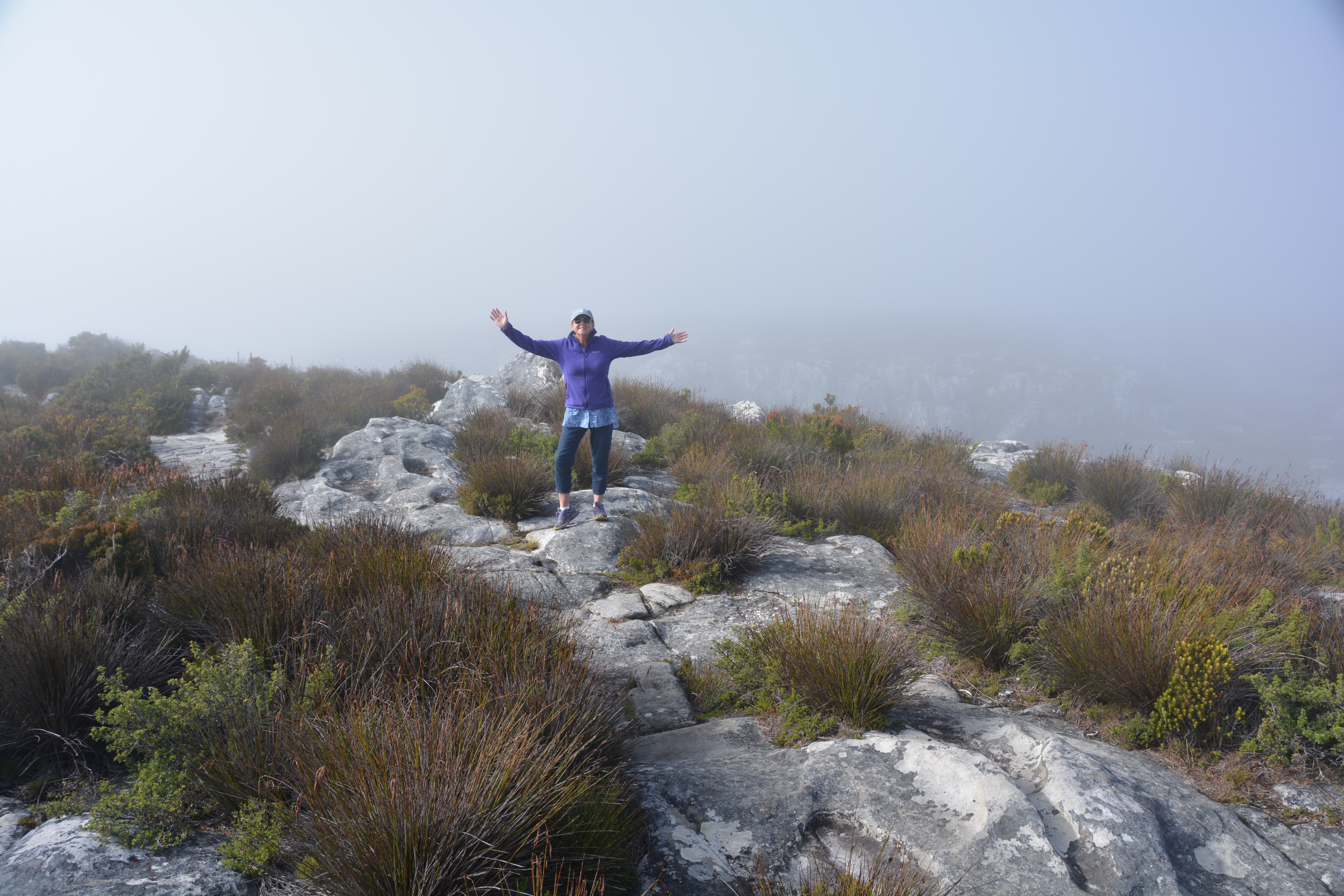






















This chapter of your story is almost over and I am anxious for the next lines. I am also so glad you were home to share in the Circle of Life with your beautiful family. Love and hugs to you all
xoxo
Thanks Anne, very kind.